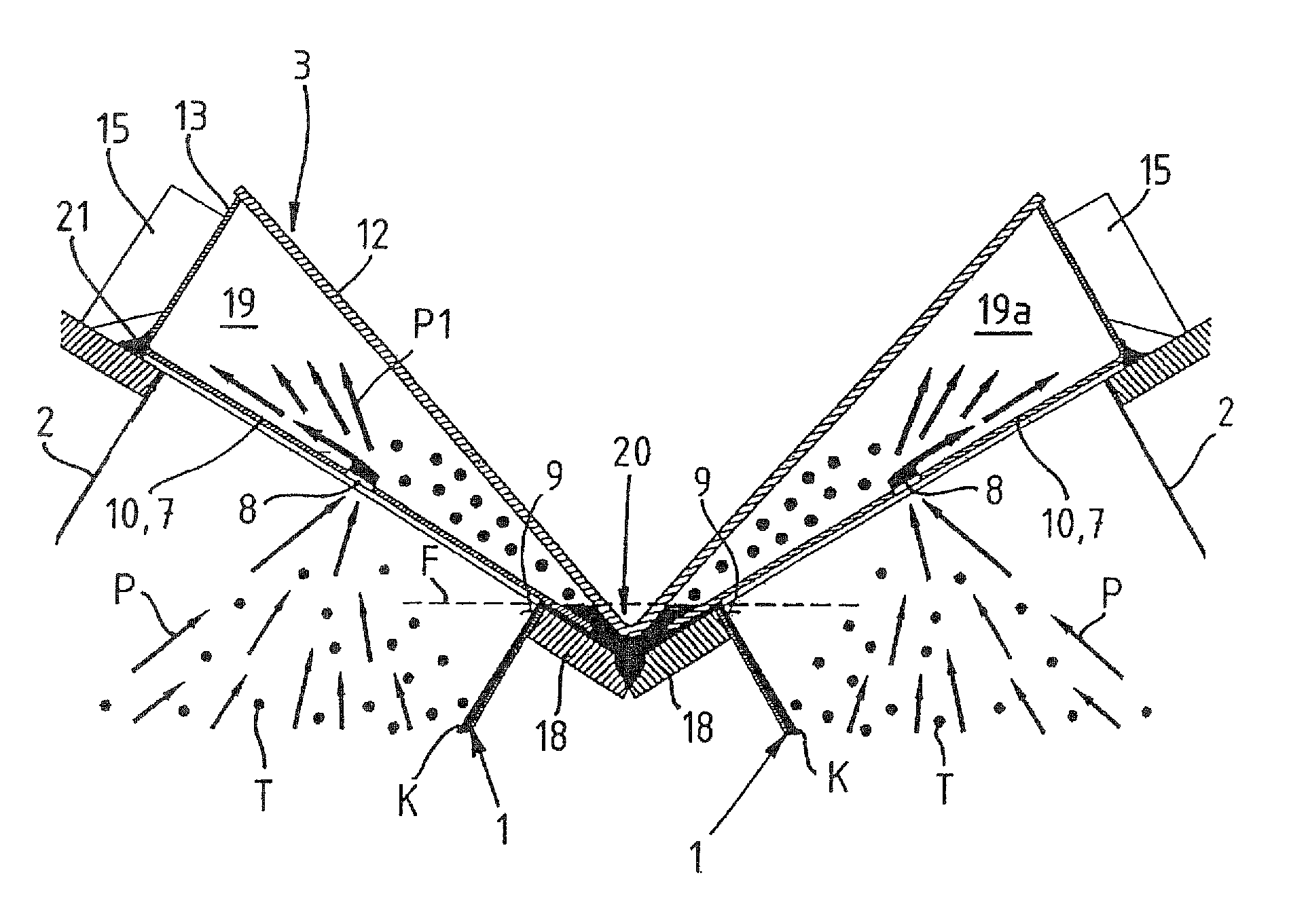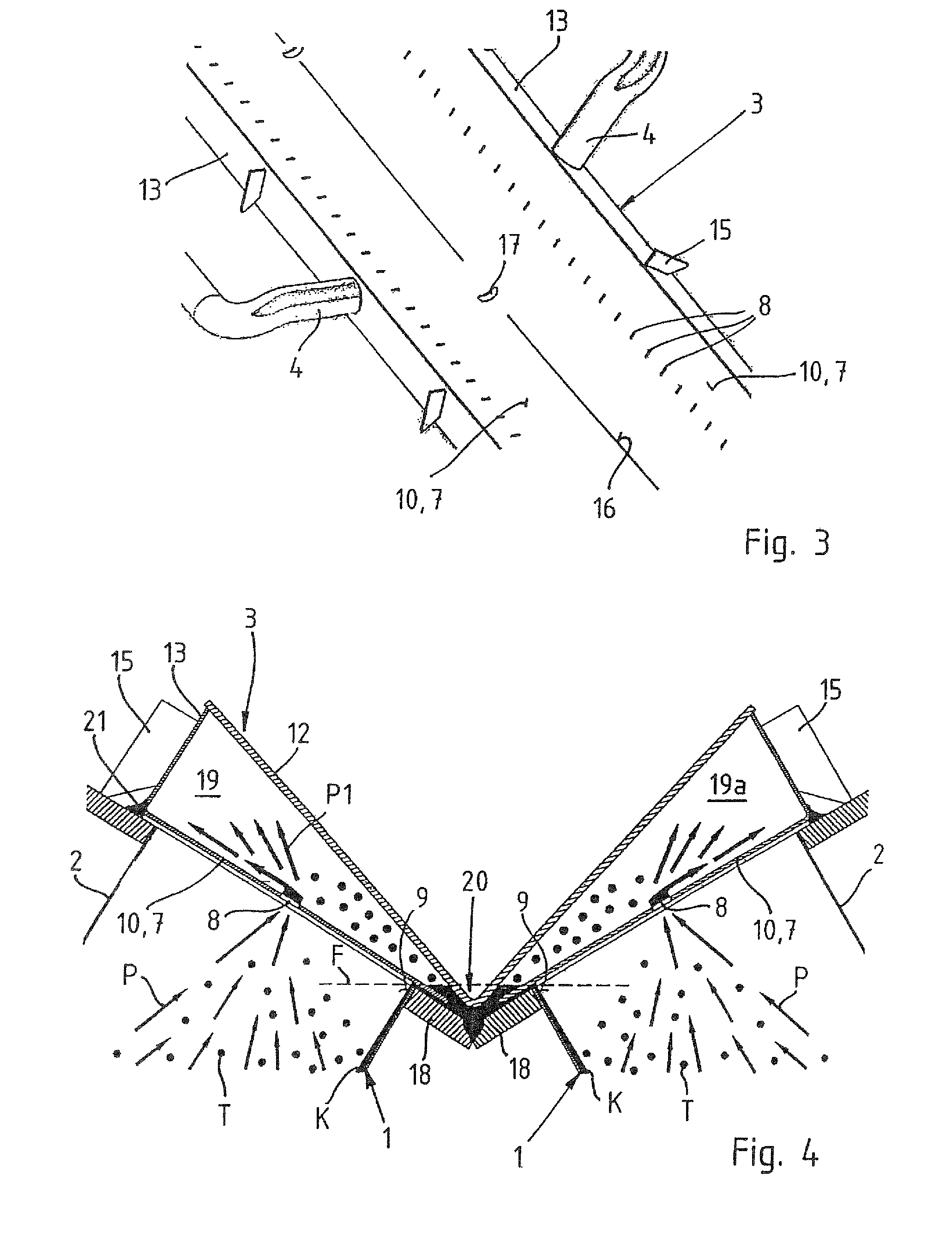Air-supplied dry cooler
a dry cooler and air technology, applied in the direction of heat exchanger types, stationary conduit assemblies, steam/vapor condensers, etc., can solve the problems of condensate freezing, quick freezing of generated condensate, and possible problems, so as to reduce the number of weld seams, and reduce the risk of leakage
- Summary
- Abstract
- Description
- Claims
- Application Information
AI Technical Summary
Benefits of technology
Problems solved by technology
Method used
Image
Examples
Embodiment Construction
[0029]FIG. 1 shows the upper region of the direct-flow condenser (dephlegmator) 1 of an air-supplied dry cooler, which is not illustrated in its entirety, for condensing steam. The flow direction of the vapor is indicated by the arrows P. The steam rises inside heat exchanger pipes 2 arranged in parallel and enters a suction chamber 3. A suction pipe 4, through which the steam-gas mixture is suctioned off the dephlegmator 1, is connected at the center of the suction chamber 3. As depicted in the perspective diagram of FIG. 2, two respective suction chambers 3 are each connected to a central suction 5.
[0030]FIG. 1 further shows on the rightmost side of the Figure a portion of a direct-flow condenser 6. The direct-flow condenser 6 is not provided with a suction chamber 4, because the steam flows downward from the top. However, the heat exchanger pipes 2 have the same cross-section as the heat exchanger pipes of the dephlegmator 1. As clearly indicated, the suction chamber 3 has signif...
PUM
 Login to View More
Login to View More Abstract
Description
Claims
Application Information
 Login to View More
Login to View More - R&D
- Intellectual Property
- Life Sciences
- Materials
- Tech Scout
- Unparalleled Data Quality
- Higher Quality Content
- 60% Fewer Hallucinations
Browse by: Latest US Patents, China's latest patents, Technical Efficacy Thesaurus, Application Domain, Technology Topic, Popular Technical Reports.
© 2025 PatSnap. All rights reserved.Legal|Privacy policy|Modern Slavery Act Transparency Statement|Sitemap|About US| Contact US: help@patsnap.com



